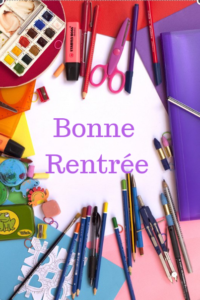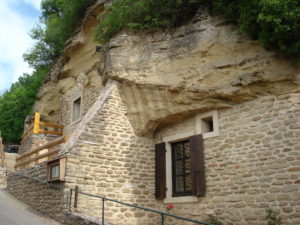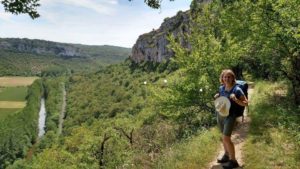 (Edited 7/9/19)Like many of you, I teach a mixed level class that includes students in both French 4 and French 5, some of which are taking the course for college credit and/or in preparation for the IB exam. While the brand-new French 4 students are understandably intimidated by being in class with the French 5 students, I have found that I provide the best learning environment for these students by keeping them all together for our class activities. In fact, there is such a wide range of proficiency at this level that it is not always apparent to outside observers which students are in each class. So, while I assess the two groups differently, the activities for the following unit have been developed for a range of Intermediate learners. (7/9/19: new link) to the agenda to which all the documents are linked. Each lesson is briefly described below.
(Edited 7/9/19)Like many of you, I teach a mixed level class that includes students in both French 4 and French 5, some of which are taking the course for college credit and/or in preparation for the IB exam. While the brand-new French 4 students are understandably intimidated by being in class with the French 5 students, I have found that I provide the best learning environment for these students by keeping them all together for our class activities. In fact, there is such a wide range of proficiency at this level that it is not always apparent to outside observers which students are in each class. So, while I assess the two groups differently, the activities for the following unit have been developed for a range of Intermediate learners. (7/9/19: new link) to the agenda to which all the documents are linked. Each lesson is briefly described below.
Lesson 1: I will begin this lesson by eliciting student responses on their definition of family, after which we will watch a video in which French people respond to this same question. The students will then complete an interpersonal activity in which they ask each other for information which is given on the other’s infographic. The students will then discuss their own families, giving the same types of information that was included in the infographics. Students will spend any remaining class time discussing differences that they noted between their own families and what they read about French families. For homework they will add photos of four different “family” members to Google Slides for a short presentation they will later give.
Lesson 2: The students will begin this lesson by discussing a series of quotes about families in their small groups, explaining their understanding of the quote, whether they agree with it, and providing an example from their own lives or a text to support their opinion. Next, we will review object and disjunctive pronouns by completing a couple of interactive activities together and then individually. After this review, they will watch a video by the vlogger, Norman, and answer questions using these pronouns. Because this lesson will fall on a 90-minute block day in my class, we will also study a family-related song before I give them 10-15 minutes for free voluntary reading.
Lesson 3: In this lesson the students will again exchange information from a section of an infographic, this time on families in Quebec. (Each member of the dyad will have a different section of the same infographic and will have to find out information from the other’s section.) The students will then write the introduction to an essay comparing French and Quebecois families. (They will not write the entire essay, due to time constraints.)
Lesson 4: Students will begin by reading an article about polygamy in Senegal. Rather than preparing a comprehension guide for this text, I have assigned Cornell notes. Although this is a new strategy for me, I think this activity will help prepare the students to discuss this text the following day.After discussing the polygamy text by asking and answering the questions they wrote during the Cornell note-taking, the students will take a short quiz to assess their comprehension of the article. They will then listen to an interview about a legal case regarding a polygamist in France and complete a comprehension guide.
Lesson 5: After these lessons on family structures in three different Francophone countries, the students will present four members of their own “family” by sharing pictures and information about each person they have chosen. While I seldom assign class presentations in order to avoid undue anxiety among my students, I will ask students to speak to the class as a whole this time so that we can all get to know each other better. I believe the topic will be quite low stress as the students will not need to memorize new information or use complicated vocabulary. The students will then provide this same information in writing via an email to a prospective exchange student. Because some of these students will be taking the IB test in the spring, this assignment has been designed to practice the e-mail text type.
Lesson 6: In this lesson I will present the animated short film, Au fil de l’age by playing it and stopping frequently to ask questions about what was happening/what happened. The students will then write a summary using screenshots from the video. Finally, the students will complete an assessment in which they matching sentence starters to the appropriate completion, a common task on IB interpretive assessments.
Lesson 7: In this lesson, the students will discuss quotes about grandparents before creating Cornell notes for an article about grandparents’ rights in France. They will then discuss the article by asking the questions they created while note-taking.
Lesson 8: In this lesson students will exchange information from infographics in order to compare same-sex marriage in France and Canada. Finally, they’ll watch a 1jour1info video about same-sex marriage and complete a comprehension guide.
Lesson 9: The students will read an article about same-sex marriage and complete an IB-style comprehension guide. Next, they’ll watch a Cyprien video on the same theme. While Cyprien’s videos are not always appropriate for classroom use, I did not personally find anything objectionable about this one. In fact, I found that his self-deprecating humor on this topic might spark some interesting discussion.Finally, the students will synthesize what they learned in the article and video by writing a “To Do” list for the mayor who married the couple in the article.
Lesson 10: In this lesson, we’ll address the next subtopic–adoption. The students will read an article and then take notes using a technique that I learned from a professional development opportunity on critical thinking. I will assign each student a colored “hat” (just a card with a picture) to wear as they read an article about adoption. Based on the hat they are assigned, they will take notes on 1)the facts presented in the article, 2) their personal reactions, 3) the negative aspects of the ideas in the article, 4) the positive aspects of the ideas in the article, or 5) creative solutions to the problems discussed in the article. (I won’t be assigning the blue hat this time.) The students will then discuss the article according to the perspective of their hat, filling in the corresponding sections of their graphic organizers.This will be my first time implementing this strategy and I’m really excited to see how it goes! Finally, the students will watch a video about adoption and complete a comprehension guide.
Lesson 11: I’ll introduce our final subtopic, blended families, by leading a discussion of three comics on this subject. Next the students will read the blog entry of a comic character who describes a conflict between a friend and her stepparent. The students will complete a graphic organizer with the causes and effects of this conflict and then discuss their ideas with a partner. Finally, they will write a response to the blogger’s friend with advice to improve her relationship with her stepmother.
Lesson 12: In this lesson the students will prepare for their IPA on this unit by practicing the role play which will be performed for the interpersonal task and a draft for the presentational writing task. (In order to ensure spontaneous speech, the students will not know their role or their partner in advance of the assessment, but I do provide the prompt so that they can start formulating some ideas.)
Lesson 13-14: The students will complete the interpretive reading task of the IPA while I call up random pairs for the role plays. They will then complete the presentational writing task.
Note: Because of the length of this unit and the fact that I was following it with a film that would have its own IPA, I did not end up administering an IPA at the end of the unit. (I did, however, formally assess several of the tasks that the students completed throughout the unit. You may click here for the link to the IPA that my colleague and I had developed for this unit.
I am hoping that this unit will provide ample opportunities for the students to get to know each other, develop confidence in their communicative abilities, and practice some of the skills they will need to be successful on the IB test.
Image Credit: https://pixabay.com/fr/famille-l-homme-femme-gar%C3%A7on-312018/










